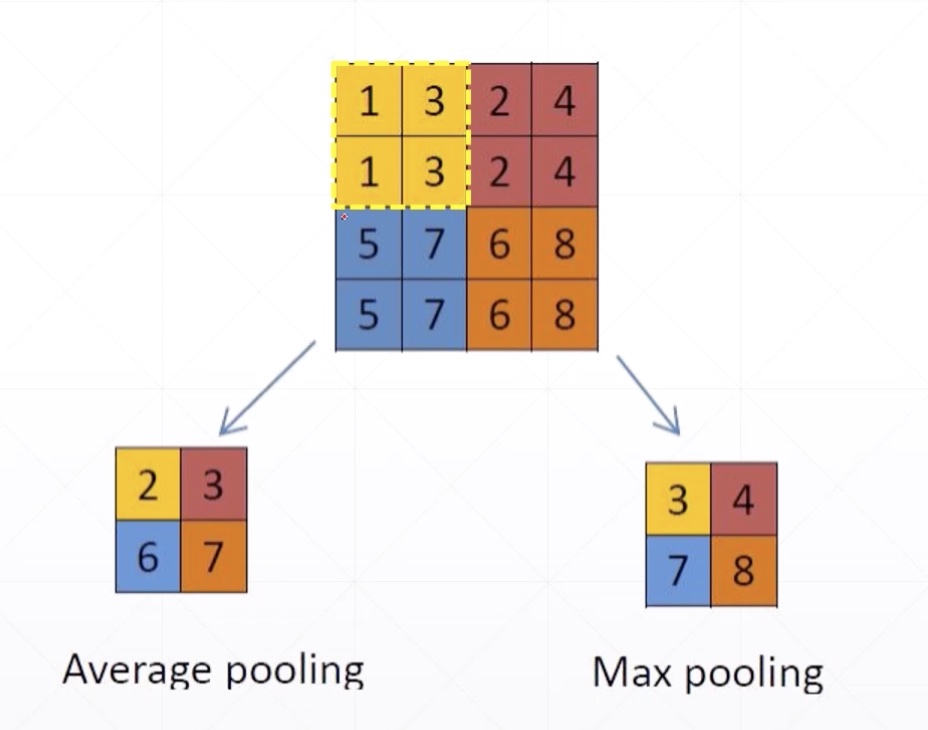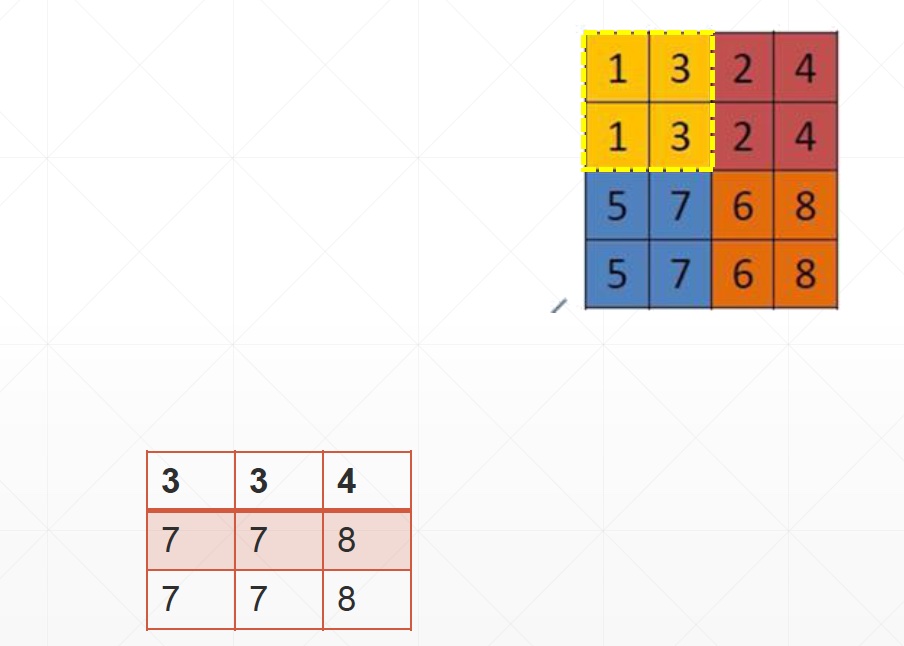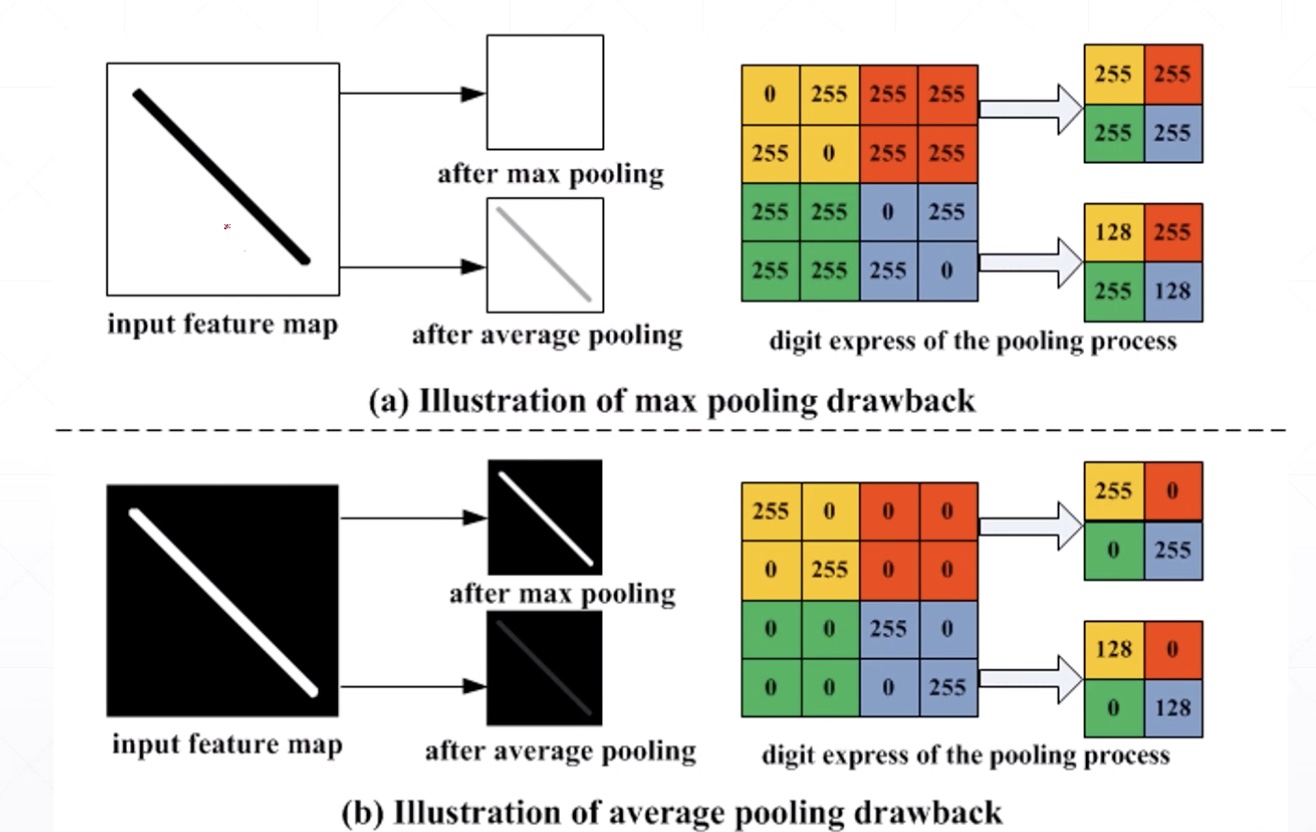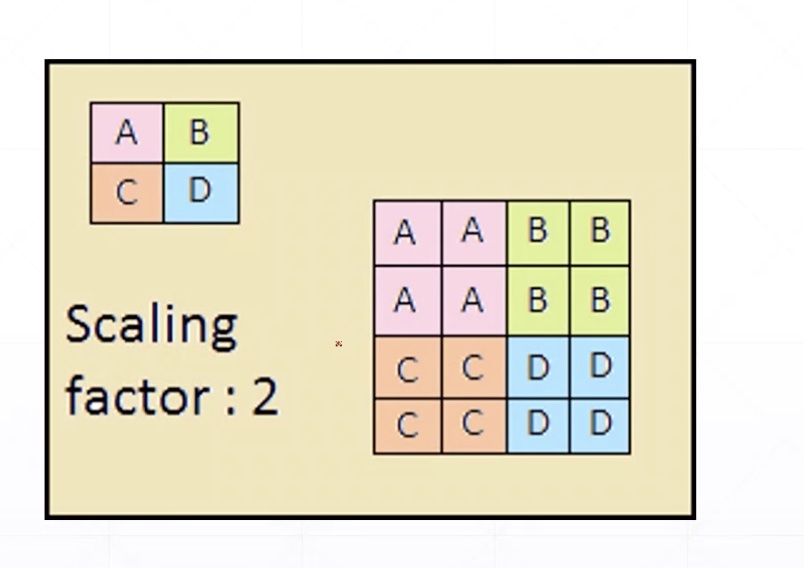Outline
Pooling
upsample
ReLU
Reduce Dim

subsample
Max/Avg pooling
- stride = 2

Strides
- stride = 1

For instance

import tensorflow as tf
from tensorflow.keras import layersx = tf.random.normal([1, 14, 14, 4])
x.shapeTensorShape([1, 14, 14, 4])pool = layers.MaxPool2D(2, strides=2)
out = pool(x)
out.shapeTensorShape([1, 7, 7, 4])pool = layers.MaxPool2D(3, strides=2)
out = pool(x)
out.shapeTensorShape([1, 6, 6, 4])out = tf.nn.max_pool2d(x, 2, strides=2, padding='VALID')
out.shapeTensorShape([1, 7, 7, 4])upsample
nearest
bilinear

UpSampling2D
x = tf.random.normal([1, 7, 7, 4])
x.shapeTensorShape([1, 7, 7, 4])layer = layers.UpSampling2D(size=3)
out = layer(x)
out.shapeTensorShape([1, 21, 21, 4])layer = layers.UpSampling2D(size=2)
out = layer(x)
out.shapeTensorShape([1, 14, 14, 4])ReLu

x = tf.random.normal([2,3])
x<tf.Tensor: id=76, shape=(2, 3), dtype=float32, numpy=
array([[-0.30181265, 0.39785287, -0.78380096],
[ 0.6593401 , -0.40962896, -0.3656048 ]], dtype=float32)>tf.nn.relu(x)
x<tf.Tensor: id=76, shape=(2, 3), dtype=float32, numpy=
array([[-0.30181265, 0.39785287, -0.78380096],
[ 0.6593401 , -0.40962896, -0.3656048 ]], dtype=float32)>layers.ReLU()(x)<tf.Tensor: id=80, shape=(2, 3), dtype=float32, numpy=
array([[0. , 0.39785287, 0. ],
[0.6593401 , 0. , 0. ]], dtype=float32)>




















 8003
8003











 被折叠的 条评论
为什么被折叠?
被折叠的 条评论
为什么被折叠?








